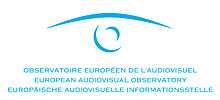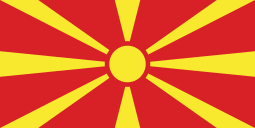European Audiovisual Observatory
The European Audiovisual Observatory (French: Observatoire européen de l’audiovisuel) is a European institute providing statistical and analytical information on the fields of film, television, video/DVD, new audiovisual media services and public policy on film and television. It was set up by the Council of Europe as a Partial Agreement. Its legal basis is Resolution (92) 70 of the Committee of Ministers of the Council of Europe, 15 December 1992. The idea for the Observatory originated at the European Audiovisual Assizes in 1989, and was actively pursued by Audiovisual Eureka during the years 1989 to 1992.
 | |
| Formation | 1992 |
|---|---|
| Type | International organisation |
| Headquarters | Strasbourg, France |
Membership | 42 active members (41 countries plus the European Union represented by the European Commission |
| Website | www |
Purpose
The Observatory collects, processes and distributes information on the audiovisual sector in its member states as well as on the work of international organisations. Occasionally it also follows developments in other territories. The observatory's output comes in the form of market reports, statistics and financial analyses as well as legal reports and news up-dates. The information is distributed by the Observatory in the form of products and services, some free of charge, including print publications, information on-line, databases and directories, and contributions to conferences and workshops.
The information provided by the European Audiovisual Observatory is aimed at professionals working within the audiovisual sector, media service providers, international organisations, legislators, and anyone else with professional interest in the field.
Organization

The Observatory is based in Strasbourg, France, in the Art Nouveau Villa Schutzenberger in Strasbourg's European quarter. This office space is made available by the City of Strasbourg. The Observatory's budget is mainly funded by direct contributions from its member states and the European Union, represented by the European Commission, and partly through revenues from the sale of its products and services.
The Observatory also hosts the secretariat of the European Platform of Regulatory Authorities (EPRA), allowing cooperation between the two bodies in the field of information collection. The official languages of the European Audiovisual Observatory are English, French and German. The Executive Director is Susanne Nikoltchev.
The European Audiovisual Observatory has 41 member states. The European Union, represented by the European Commission, is also a member. The members of the Observatory are represented on its Executive Council, which meets twice a year in order to adopt the Observatory's action plan and approve its budget. The representatives within the Executive Council usually come from those ministries and national institutions which deal with cultural or audiovisual policy.
The members of the European Audiovisual Observatory are:



.svg.png)






































The Observatory's Advisory Committee is composed of representatives from the main European professional organisations as well as from the Observatory's partner organisations. It meets regularly in order to advise the Observatory on the information needs of the professionals of the audiovisual sector.
Products
- LUMIERE - Free-access database on admissions to films released in Europe[1]
- KORDA - Free-access database on public funding for the film and audiovisual sector in Europe[2]
- MAVISE - Database on TV and on-demand audiovisual services and companies in Europe EU-27 and candidate countries (financed by the DG Communication of the European Commission)- Operational from the end of 2007.
- IRIS MERLIN - free access database on the legal audiovisual matters in Europe[3]
Notes
- "LUMIERE : Search".
- "Archived copy". Archived from the original on 2014-03-02. Retrieved 2014-03-19.CS1 maint: archived copy as title (link)
- http://merlin.obs.coe.int